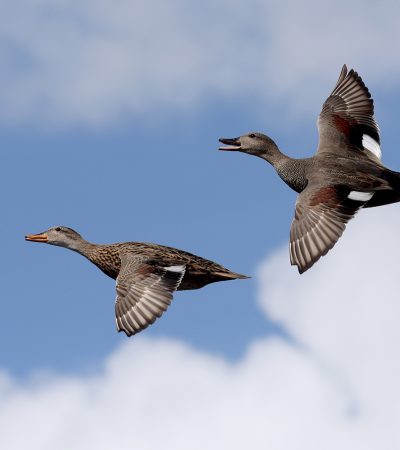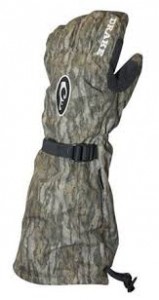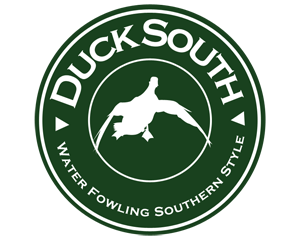Hunting ducks in flooded timber is one of duck hunting’s greatest experiences. When winter rains saturate bottomland forests, runoff quickly fills creeks and rivers. Excess water starts backing out into adjacent lowlands, many of which are covered in lush hardwood forests that trap the water for up to weeks at a time. This is nature’s ageless system of flood control.
Flooded timber is a duck magnet, especially for mallards. The fresh supply of acorns, aquatic invertebrates and other favorite foods make this newly flooded ground irresistible to ducks and duck hunters alike. Sometimes thousands of ducks will show up in a newly flooded area overnight.
This is why flooded timber is so venerated by duck hunters in Arkansas, Mississippi, Louisiana, Tennessee, Missouri and other states where this special habitat still exists. When big flights of mallards are parachuting down through the trees and landing around your boots, it’s as exciting as duck hunting gets! This is why many hunters feel that shooting greenheads in flooded timber is the absolute essence of this sport.
As floodwaters rise, the ducks shift around to find the best and freshest food. Oak trees grow on bottomland “ridges” (only a foot or two higher than surrounding terrain), and when a new ridge floods, it can create a hotspot.
Thus, hunters working flooded timber should run rivers and backwater sloughs or drive roads next to the bottoms to discover where ducks are concentrated. This is typically done in the afternoon prior to the next morning’s hunt.
Ducks prefer landing in flooded timber in gaps or holes in the overhead forest canopy, so hunters should conceal themselves next to large trees on the upwind or crosswind edge of the “hole.”
Weather plays a big role in timber hunting success. The best day is a sunny, cold one with a slight breeze. Conversely, the worst weather for duck hunting in flooded timber is rainy, warm and still. Such conditions make ducks skittish and less responsive to calling.
Hunters must do two things when ducks are circling: stay in the shadows, and keep still when the birds are overhead. Never set up next to a hole where you’re facing the sun when the ducks are coming in. Instead, set up looking west, north or south, even if this means the birds must approach over your head. If they don’t see you, they’ll land nearby, and the shooting will be as up-close-and-personal as duck hunting offers!
Decoys
Sometimes decoys aren’t needed when the overhead canopy is thick and mallards are descending through the limbs. In such cases, the birds are coming more to calling and splashing noises than to duck look-alikes on the water.
However, decoys are usually helpful in most flooded timber situations, especially in open holes or thin woods. Then, ducks circling overhead have a better view of the water below, and decoys will help pull them in.
Usually, two dozen decoys are plenty unless the hole is large. Hunters should be able to adjust anchor string lengths to a depth range of a few inches to several feet. Anchor weights should weigh just a few ounces. Carry decoys in backpack-style mesh decoy bags for easy portability.
Standard-size decoys are better than magnums in flooded timber. Their smaller size makes them easier to carry and set out. Also, since ducks typically work close in flooded timber, they have no problems spotting the smaller decoys.
Ideally, decoys should have some movement, either from jerk strings, battery-powered motion decoys or hunters kicking water. Many timber veterans consider water movement more important than having decoys. Use both, and the power of persuasion on circling ducks will be even greater.
Gear
Mobility for hunting in flooded timber is achieved by using a boat and/or wading. The best rig for hunting in flooded timber is a johnboat with a semi-vee bow. The outboard should be a short-shaft model with a slip clutch and a 360-degree turning radius for navigating through the trees.
Other suitable boats include canoes, pirogues, Go-Devils or similar backwater craft. Travel distance, current, exposure to wind and number of hunters and amount of gear to carry are factors in selecting a boat and motor. The overriding considerations are stability and safety – no overloading, and always wear a life vest when the boat is running.
A portable blind affixed to a boat is a great option for hunting in flooded timber where the water is too deep for wading.
Shooting in timber is usually close up, so heavy firepower isn’t needed. A 12-gauge with a modified choke and #3 or #4 steel loads (2-¾ or 3-inch) is a lethal combination in the woods.
Most timber veterans wear waders constructed with tough outer material (great for preventing tears from snags and thorns). A backpack or shoulder bag is handy for toting shells, food, thermos, spare call, GPS, hand warmers, neoprene gloves and other small accessories.
Some companies make special timber-hunting jackets, shooting vests, shell belts, game straps and other paraphernalia. Three highly recommended accessories are a face mask, wading staff and shotgun sling.
Calling
Hunters should call to circling ducks as naturally as possible. Timber pros blow “soft” calls: small barrels, plastic reed(s) and medium to low volume. A “mellow” or “growling” call is considered by most to be better in the woods than a call that is high-pitched.
The standard call for timber hunters is the 4-6 note hail call of a mallard hen, starting high, then tailing off with each note. Intersperse these calls with feeding chatter and lonesome hen quacks to sound like a raft of mallards loafing on the water.
Tailor your calling style and frequency to the mood of the ducks. Each day they want something different, some days more calling, other days less. Experiment with different intensity levels and tempos to see what works best.
Two or more callers frequently have greater success working ducks in timber than a lone caller. Again, the point is for all callers’ combined efforts to sound as natural as possible.
Timing is as important in calling as making good sounds. Two good rules are to call more when ducks are going away and call less when they’re coming toward you. But, don’t stop calling when they get below the treetops. The time to drop the call is when you raise your gun to shoot!




